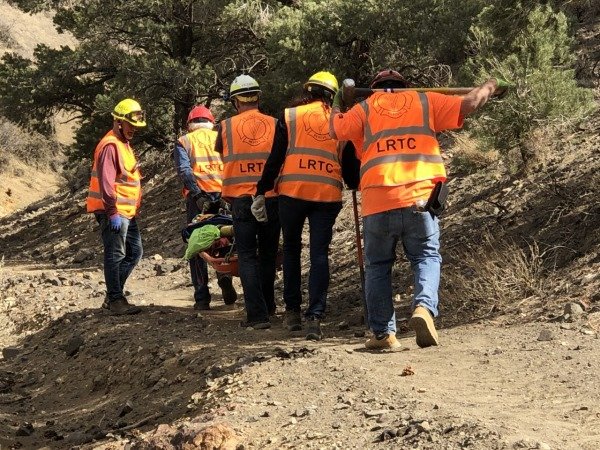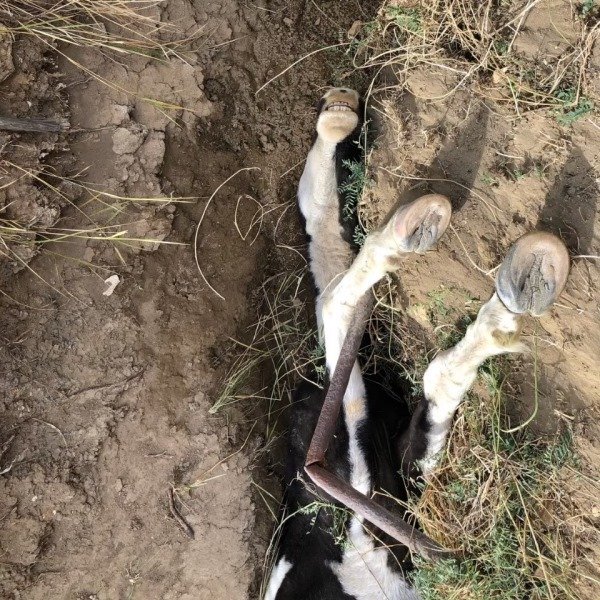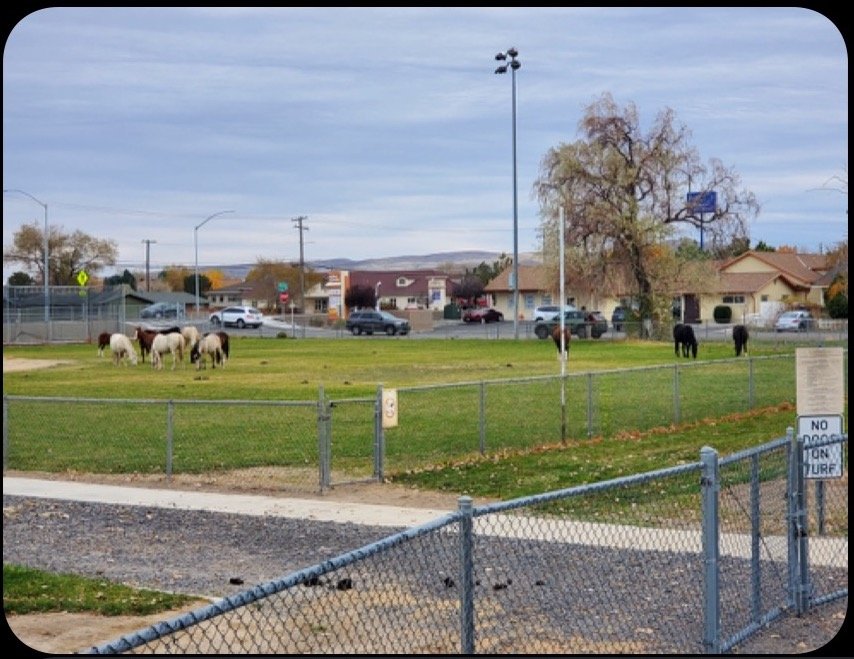November Happy Tails Rescue
A young stallion caught between a gully and hard place!
Late on a Sunday morning, Wild Horse Connection was notified that a horse was stuck upside down in a canyon in some hills on the range. He had been spotted by some local hikers. They immediately sent volunteers up to the site to assess and get photos and put LRTC’s Technical Large Animal Rescue team on notice that there might be a pending rescue. Shortly after, photos came in. This boy was really stuck. He was identified in the AWHC database as a young stallion named “Gabe”.
The rescue team deployed, bringing a rescue trailer with various equipment. They arrived at the trailhead which is as far as most of the vehicles could go. They loaded everything they could onto a Stokes basket (meant for carrying an injured person) and put it into one member’s four-wheel drive. Unfortunately, he was only able to drive another half a mile. From there the team took turns hiking the equipment the last mile to the horse.
Once there they found Gabe not only upside down on his back but his shoulders and hips were firmly wedged in a gully caused by runoff at the bottom. One team member who had arrived earlier had covered his head to protect his eyes. The walls of the gully were steep and the ground unstable, breaking away quite easily. The good news that came in was that he had been spotted walking with his bachelor buddies approximately an hour before the call came in. So time was on their side to get this boy free.
The team followed safety precautions and got to work. They secured the horse, attached straps the best they could considering his position, and set up a rope system to pull the horse out. It took several tries because he was so stuck that when they would pull the straps would slip rather than move the horse. Time was an issue due to his position and the strain on his heart and organs. Finally, with a team member down on the ground actually lifting his hips out of the wedge he was in, they were able to start sliding him forward toward the mouth of the gully where there was room for him to stand.
Once freed from all of the ropes and straps, the team stood back. Gabe was clearly exhausted. But they knew if he was going to survive he needed to get to his feet so they clapped and flapped and made noise to encourage him to get up.
Clumsily, Gabe got to his feet. His first few steps made him appear drunk as he tried to get his stiff and exhausted muscles to work. But he was upright and he continued to move and get his equilibrium back. As the team packed up, Gabe slowly walked away down the trail.
As they hiked their equipment back down, the team came around a corner and found Gabe laying down in a sternal position in the middle of the trail. He looked at them as if to say, “Not you again!”. He got back up and started leading the way down the trail. When he got to the four-wheel-drive vehicle he decided that was far enough and the team would have to see themselves the rest of the way out!
Since they were so far up the hills, there had been no choice to make about bringing Gabe in for observation or assessment. They had done all they could and it was up to Gabe to take care of himself out there. The next day when a volunteer spotted Gabe, a collective sigh of relief went up! He had made it through the night which meant internally, Gabe was likely okay. Over the next couple of days, each sighting would bring more relief. He was one lucky boy who had good timing and observant hikers on his side that morning!
Part of the LRTC rescue crew hiking equipment up to find Gabe
How Gabe was found
Birdseye view of the team setting up to get Gabe out!
Gabe after he was helped out of the Gully!
Wild horses sometimes need a hand
Not every rescue is technical or quite as challenging as Gabe! But Wild Horse Connection calls out the rescue team for all kinds of issues including public safety and the safety of the horses.
Over the last couple of months, the irrigation canal that separates the City of Fernley from the range (and keeps the horses on one side and the humans on the other) was shut off and went dry. Since we are in a second-year severe drought, the horses on the range smelled an easy meal in the fields, lawns, and parks of Fernley and began to cross over the dry canal. Unfortunately, horses and roads do not mix well. It’s unsafe for drivers and clearly unsafe for the horses.
Now that there is water back in the canal acting as a barrier, LRTC’s rescue team has been out several times loading up horses from town who now find themselves on the wrong side unable to get back, and returning them to the range side - away from the canal! So far 35 horses have gotten a ride back to safety on the range







